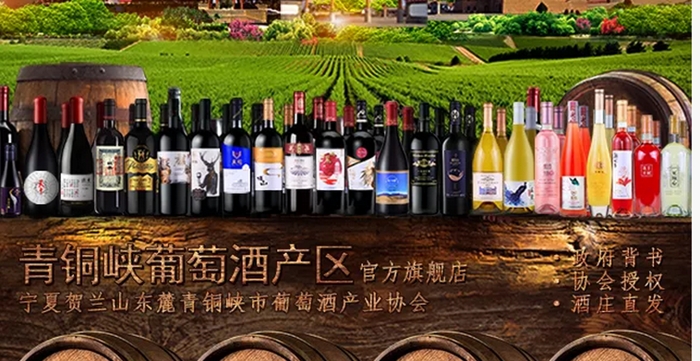By Jim Boyce | The focus for many China wine observes has narrowed over the years. Talk once centered on whether “China”, a country of diverse climates, landscapes and soils, could make any good wine. Then it increasingly shifted to the most promising regions, including places like Xinjiang and Gansu, bigger than most European nations. Now, as Chinese wines gain increased attention, we hear more about sub-regions and even, in a few cases, parts of different vineyards. Yes, there were people who already talked about such things decades ago, but for many this narrower view is quite recent.
Given this, it is not surprising to see sub-regions like Qingtongxia (é’铜峡) in Ningxia with dedicated on-line wine shops like this one on jd.com.
Qingtongxia is south of the regional capital of Yinchuan and just past the 200-kilometer-long Helan Mountain range’s tail. This means more wind and dryness and, in turn, less risk of vineyard disease—though I imagine the winters get pretty cold! Given the usual ample Ningxia sunshine, there is lots of ripeness to be found in the fruit here.
Check out this seven-minute video on Qingtongxia’s wine industry. For those who want to skip the over-the-top narration and just get the numbers, this area has over 3000 hours of annual sunshine, 230 mm of precipitation and a 160-day frost-free period. In 2016, it had 66 wine brands and 5,300 hectares of vineyards producing 45 million kg of fruit. Wine sales were reported at 180 million rmb.
I first started trying Ningxia wines over a decade ago and remember several tasty reds from Imperial Horse in Qingtongxia. They were notable not only for their quality but also value, welcome given some of the price tags in Ningxia. I have more recently enjoyed labels by fellow Qingtongxia labels WENS (温家), Yuhuang / 禹皇 and 甘麓, and it is good to see them easily available online. Check out the shop here.
Grape Wall has no sponsors of advertisers: if you find the content and projects like World Marselan Day worthwhile, please help cover the costs via PayPal, WeChat or Alipay.
Sign up for the free Grape Wall newsletter here. Follow Grape Wall on LinkedIn, Instagram, Facebook and Twitter. And contact Grape Wall via grapewallofchina (at) gmail.com.
